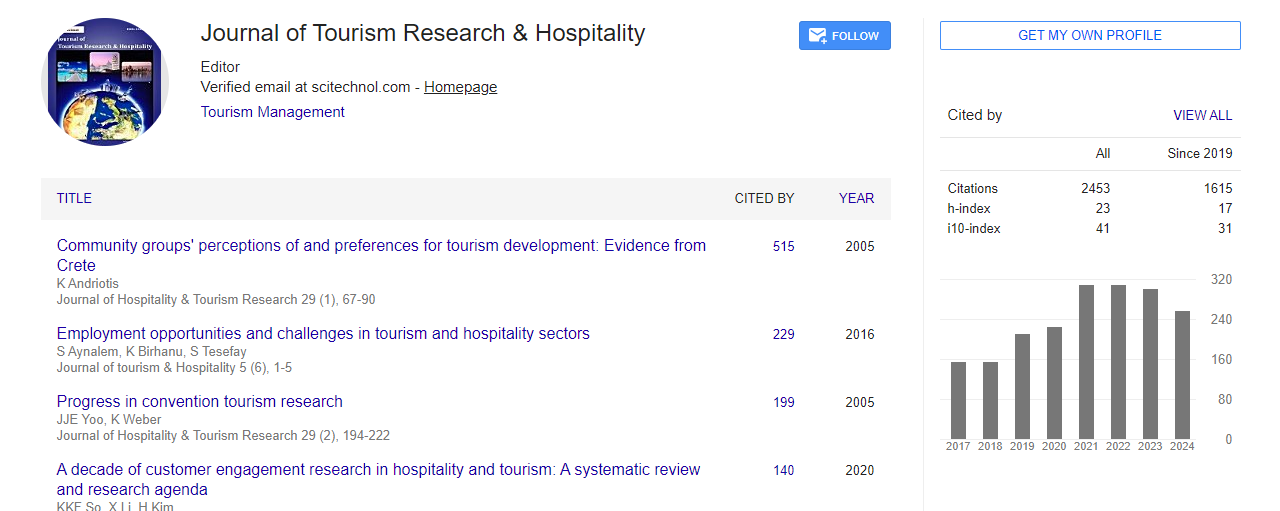Research Article, J Tourism Res Hospitality Vol: 5 Issue: 1
Middle Eastern Political Instability and Jordan’s Tourism
| Abdulla Al-Shorman1*, Akram Rawashdih2, Ahmad Makhadmih3, Areej Oudat4 and Fakhriah Darabsih4 | |
| 1Department of Anthropology, Faculty of Archaeology and Anthropology, Yarmouk University, Jordan | |
| 2Department of Tourism and Travel, Faculty of Tourism and Hotel Management, Yarmouk University, Jordan | |
| 3Department of Hotel Management, Faculty of Tourism and Hotel Management,Yarmouk University, Jordan | |
| 4Department of Tourism and Travel, Faculty of Tourism and Hotel Management, Yarmouk University, Jordan | |
| Corresponding author : Abdulla Al-Shorman Department of Anthropology,Faculty of Archaeology and Anthropology, Yarmouk University, Jordan E-mail: alshorman@yu.edu.jo |
|
| Received: March 29, 2016 Accepted: June 03, 2016 Published: June 08, 2016 | |
| Citation: Al-Shorman A, Rawashdih A, Makhadmih A, Oudat A, Darabsih F (2016) Middle Eastern Political Instability and Jordan’s Tourism. J Tourism Res Hospitality 5:1 doi:10.4172/2324-8807.1000155 |
Abstract
Middle Eastern Political Instability and Jordan’s Tourism
Abstract
Although Jordan’s tourism revenue contributes to the GDP, it fluctuates as political instability events hit the region. Therefore, this study examined nine major political impacts that took place during the period from 1990-2014 to address their impacts on tourism. The study utilized the annual number of tourists (international and Arab) and the annual percentage tourism’s share to GDP to statistically examine the relationship between the occurrence of these events and the number of tourists as well as tourism’s GDP share. The hypotheses of the study were tested using a 2-years moving average, Pearson’s correlation coefficient and Student’s t-test. The results show that the number of international tourists and the percentage of GDP decreased during an event, while the number of Arab tourists increased pointing to resilience. The effect of political instability on tourism activities is temporary and confound to less than a year after an event.
 Spanish
Spanish  Chinese
Chinese  Russian
Russian  German
German  French
French  Japanese
Japanese  Portuguese
Portuguese  Hindi
Hindi 

